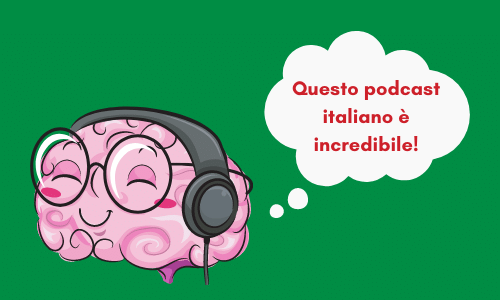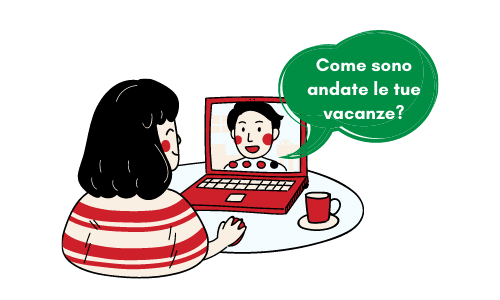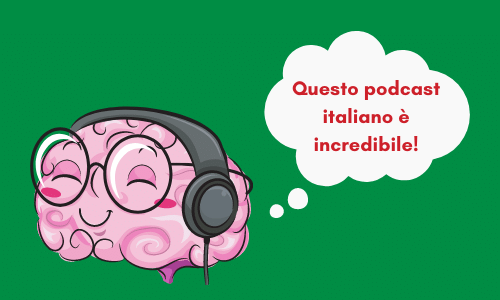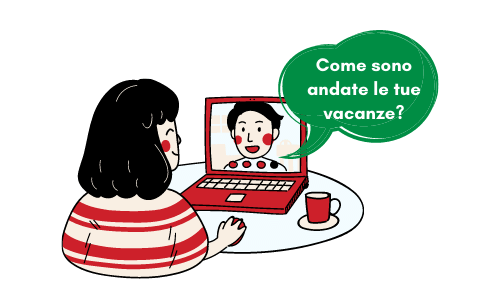What's The Best Way to Learn Italian in 2024? The Ultimate Guide
By LanguaTalk
Dozens of resources are available for learning Italian. But there's a problem. When you look for advice on what resources to use, your level, goals and budget usually aren't taken into consideration.
And most of the tools aren't recommended because they're the best but because the website owner is receiving commission on any sales. Not ideal.
You don't need outdated software like Rosetta Stone. Nor do you need expensive audio courses when there are lots of quality audio resources available for free.
I'm also not going to tell you that the best way to learn Italian is to move to or travel to Italy. Because let's face it: few of us have the time or money for this. And you'd probably spend too much time with English-speaking expats anyway.
I'm going to give you a toolkit containing all the resources you need for becoming fluent in Italian. Crucially, you'll be able to view recommendations based on your current level. And in case you're on a tight budget, more than 50% of the resources listed are free.
Habits, commitment & goals
You can jump straight into exploring the best tools for your level via the contents list. But knowing the best tools is not enough to become fluent in Italian. Tools are just one element of a wider system employed by effective language learners.
So before you check out the resources, read the below advice. It'll take you two minutes and could be crucial to your success.
1) Make learning a habit.
The speed at which you learn Italian will largely be determined by your ability to practice consistently and stick to it. If you can make learning Italian a habit, you won't need to rely on willpower or motivation, both of which fluctuate.
Habits are developed through cues and rewards. The cue sets the behaviour into action. For learning Italian, the cue could be as simple as setting a daily reminder in your calendar to practice at the same time each day. The reward should ideally be intrinsic; learning should feel rewarding and fun. Avoid resources you find boring.
2) Commit yourself to regular practice.
Create a simple weekly plan so you don't have to decide whether to practice; simply check your schedule and see what's on. The plan should be realistic and include specifics. Here's an example:
Monday - after work, 20 mins: Listen to an Italian podcast episode.
Weds - before work, 15 mins: Do some exercises on an app.
Sat - 11am, 50 mins: Italian class.
3) Study in short, focused bursts.
You'll notice that the example activities above are between 15 and 50 mins.
Learning a language is exhausting, particularly at the start. Don't push yourself to fit everything into a long, weekly study session. Short, frequent activities will be easier to fit into your week. You'll be able to concentrate better and make faster progress.
4) Be clear on your goals & adjust accordingly.
When choosing tools & resources from this guide, consider your goals.
For example, are you aiming for conversational fluency, i.e. the ability to converse with native speakers at a normal, conversational speed? If so, you'll hit your goal fastest if you spend most of your practice time speaking and listening to Italian. Prioritise listening to podcasts and speaking with a tutor or an exchange partner; avoid getting addicted to Italian learning apps.

To find the best tools for learning Italian according to your level, choose from the options below:

The best way to learn Italian for beginners
What we'll cover:
- To learn basic vocab & grammar: Podcasts | Apps
- To learn to speak Italian: 1-on-1 Tutoring | Group Classes
- Supporting tools to maximise learning
👉 Tip: consider saving this guide before exploring the resources, so you can come back to it.
Learning basic vocab & grammar:
TOOL #1: PODCASTS
Listen to an Italian podcast every few days and you'll rapidly improve your ability to understand Italian as it's spoken by natives. If you're short on time, try listening whilst doing the dishes or commuting.
To maximise your learning from podcasts, repeat the words and sentences you hear from time to time. This will help you memorise vocabulary and improve your pronunciation. Also, many podcasts have transcripts available for a fee. Use these to study the language and note down new words.
If you're a beginner, there are actually very few quality podcasts targeted at beginner Italian learners. Fortunately, there is Language Transfer, which is free and will teach you the basics in a logical manner. Once you've learnt some basics, if you like listening to the news, you can try News in Slow Italian (For Beginners). This requires a subscription (currently $20/month) and transcripts are provided.

TOOL #2: APPS
Below are the most popular apps for learning Italian, together with their ratings on the Android Play Store. I've included both free and paid options.
As a beginner, you'll find apps handy for picking up some basic vocab and grammar. But beyond this, if your goal is to be able to have conversations in the language, the best way to learn Italian is not through answering multiple choice questions on an app. It's through speaking and listening to people. So once you know some Italian, don't use the apps as a substitute for speaking and listening practice.
Apps with free plans: Duolingo (4.6) | Memrise (4.6) | Loecsen Italian (4.7) (a lesser known app that'll teach you basic phrases for travel)
Paid apps: Mondly (4.7) | Lingodeer (4.6)
Learning to speak Italian
For learning to speak Italian as a beginner, you have two main options: 1-on-1 tutoring, and group classes. Once you're able to have basic conversations in Italian, you can also try language exchanges.
If you're a complete beginner, you might want to consider learning some vocab via podcasts and apps before taking lessons.
OPTION #1: 1-ON-1 TUTORING
It's not the cheapest option, but taking private classes is certainly one of the fastest ways to learn to speak Italian. A good tutor will ensure you speak for at least 70% of the lesson time, whilst making you feel comfortable about making mistakes and providing clear feedback.
A less obvious benefit of having a tutor is keeping you on track. A good tutor will support you and help you stay consistent. Knowing you have a scheduled class/homework, and that there is somebody who cares about your progress, can be crucial.
Cost estimate: If you're taking the lessons online, there are good Italian tutors available for between $15 (£11/€12) & $30 (£21/€25) per hour. It tends to cost less than learning locally as the tutors don't have to leave home and there's more competition.
What to look out for: Many platforms do not screen tutors properly, nor offer refunds or timely support with booking issues. Take a trial session before committing to lessons. And watch out for services that try to tie you into a subscription.
Where to find a tutor: Compared to other sites, it's easier to find a talented tutor on LanguaTalk, which I co-founded. Unlike others, we actually put time into finding the best tutors. You can take a free, 30-minute taster session with no card required. Check out the reviews and videos of Italian tutors here.

OPTION #2: GROUP CLASSES
If you'd prefer to learn locally and with others, group classes are worth exploring.
Pros: It's a social experience; you may make friends with your classmates. If you like structure, it may suit you as textbooks often guide the classes.
Cons: There's little flexibility to focus on what you personally want to improve upon, nor to concentrate on topics that interest you. If you want to learn how to speak with locals, you may be frustrated with the limited speaking practice.
Cost estimate: This depends on where you live and the size of the group. The cost will likely be similar to 1-on-1 online classes.
Whatever you choose, try topping up your speaking practice through self-talk.
All the normal self-talk that goes on in your head during the day can be done in Italian. Instead of thinking “I need to drink something” in English, think it in Italian instead. And when you don't know how to say something, look it up quickly on your mobile. I cover the best tools for this below...
Supporting tools to maximise learning:
TOOL #1: DICTIONARIES & TRANSLATORS 📕
Three of the best online dictionary and translation apps are: Reverso, WordReference & Linguee. Crucially, they all provide examples of the words in context. Try noting down full phrases and sentences as this will aid memorisation whilst simultaneously teaching you how sentences are formed.
TOOL #2: VERB CONJUGATORS 🤓
As a beginner, you must enjoy learning, or you may give up. This means avoiding the boring stuff, which for many, means grammar. So at the start, don't worry about anything other than the present tense, which is all you need to have simple conversations.
But even for the present tense, you'll still need to conjugate verbs. WordReference & Reverso both provide excellent verb conjugators for free.
TOOL #3: FORVO
A dictionary specifically for pronunciation. It has a database of several million words pronounced in over 300 languages – all recorded by native speakers. A wonderful free resource!
TOOL #4: A NOTEBOOK ✍
Whilst using the tools listed in this guide, you should jot down new words in a notebook. Studies have shown that when you write rather than type, your ability to recall information improves significantly. Researchers believe this is because writing is slower and involves deeper mental processing. Sometimes, old school is the way to go!

Get Started:
- Experiment with the tools listed above to see what works best for you. This could be a mix of podcasts, classes and apps. Add them as activities in your calendar over the next week. If you're looking to learn Italian as fast as possible, you may want to explore taking 1-on-1 lessons. On LanguaTalk, you can check tutor profiles and book a free, 30-minute taster session.
- Save this guide so you can come back to it later.
Buona fortuna! (Good luck!)

The best way to learn Italian if you have a basic level (A2)
What we'll cover:
- To improve your listening skills, vocab & grammar: Apps | Netflix | News | Podcasts
- To learn to speak Italian: 1-on-1 Classes | Group Classes | Language Exchanges
- Supporting tools to maximise learning
👉 Tip: you may want to save this guide before exploring the resources, so you can come back to it.
Improve your listening skills, vocab & grammar:
TOOL #1: APPS
Below are the most popular apps (both free and paid) for learning Italian, together with their ratings on the Play Store.
A caveat: apps are designed to be addictive. You already know enough vocab and grammar to start speaking to people and listening to Italian media. If you want to be able to communicate in the language, the best way to learn Italian is not through staring at an app. It's through speaking and listening to people. Use the below apps to complement your speaking/listening practice, not as a substitute.
Apps with free plans: Drops (4.7) | Memrise (4.6) | Beelinguapp (4.6) | Duolingo (4.6) | Clozemaster (4.3)
Paid apps: Mondly (4.7) | Lingodeer (4.6)
TOOL #2: NETFLIX
If you have Netflix, numerous Italian language shows are at your fingertips. Some good shows available at the time of writing include Suburra and The Trial. As the shows change frequently, here's a link that will show all the latest Italian films & shows available on Netflix.
How to use Netflix for learning Italian:
- Put Italian subtitles on. Resist using English subtitles as you'll end up reading them and not paying attention to the Italian.
- If you miss something, you can use the menu to skip back 10 seconds.
- Change the playback speed to 75% when required.
- If it's still too hard for you, many shows in English also have Italian subtitles so you can at least read them and pick up new vocab.
- Add new vocab in a notebook and revise it.
TOOL #3: NEWS
Do you watch the news? How about doing so in Italian instead of English? News presenters speak clearly, and you may already know some of the stories, helping you understand.
RAI, Italy's public broadcaster, allows you to watch live news, even if you're outside Italy. There's also Euronews for international news clips and articles.
Interested in reading Italian newspapers? You can find a list of them here. Note also that RAI also has Italian TV programmes available, though only some are viewable outside Italy.
TOOL #4: PODCASTS
Unlike some other languages, when it comes to learning Italian at A2 level, there isn't a podcast targeted specifically at this level. So, you'll need to challenge yourself with intermediate level podcasts and not worry about understanding every single word. You can see our recommendations for intermediate level podcasts here. Alternatively, you could focus on other learning methods, like taking Italian lessons or using apps.
Learning to speak Italian
There are three main options for building your confidence in speaking Italian: 1-on-1 classes (most effective), group classes (social), and language exchanges (cheap/free).
OPTION #1: 1-ON-1 CLASSES
It's not the cheapest method, but taking 1-on-1 lessons is without doubt the fastest way to learn to speak Italian. A good tutor will get you speaking for at least 70% of the lesson time, whilst making you feel comfortable about making mistakes and providing clear feedback.
A less obvious benefit of having a tutor is keeping you on track. A good tutor will support you and help you stay consistent. Knowing you have a scheduled class/homework, and that there is somebody who cares about your progress, can be crucial.
Cost estimate: If you're taking the classes online, there are good Italian tutors available for between $15 (£11/€12) & $30 (£21/€25) per hour. It tends to be cheaper than learning locally as the tutors don't have to leave home and there's more competition.
What to look out for: Many platforms do not screen tutors properly, nor do they offer refunds or timely support with booking issues. Book a taster session before committing to classes. And beware services that try to tie you into a subscription.⛔
Where to find a tutor: Compared to other sites, it's easier to find a good tutor on LanguaTalk, which I co-founded. Unlike others, we invest time into finding the best tutors. You can take a free, 30-minute taster session (no card required). Check out the videos and reviews of our Italian tutors here.

OPTION #2: GROUP CLASSES
If you'd prefer to learn locally and with others, group classes are worth considering.
Pros: It's a social experience - your classmates may become good friends. If you need a lot of structure, it may suit you as textbooks often guide the classes.
Cons: You'll follow a fixed curriculum, meaning you can't focus on what you personally want to improve upon, nor concentrate on topics that interest you. If you want to learn how to speak with locals, you might be frustrated by the limited opportunities to practice speaking.
Cost estimate: This depends on where you live and the size of the group. The cost will likely be similar to 1-on-1 online classes.
OPTION #3: LANGUAGE EXCHANGES
If you have a limited budget and/or live in a city, you may want to try a language exchange.
Pros: Drinking alcohol will make you feel fluent, even if your sentences don't make sense 🍻 (the events are often held in bars). It's fun and you may meet some cool people (I made some lifelong friends at exchanges in Paris & Valencia).
Cons: You may drink more alcohol than is good for you, particularly if you're nervous. They're not an efficient way to learn - you spend time travelling to the meet up and once you get there, you spend half your time helping others with your native language. You may get stuck with people with whom you have zero in common.😴
Where to find language exchanges: Meetup has exchanges in many cities, whilst Tandem and HelloTalk are apps for meeting people to chat online with. If you're a lady, watch out for strange guys using these apps for dating (this also applies to Meetup, but less so, in my experience).
Whatever you choose, try topping up your speaking practice through self-talk. All the normal self-talk that goes on in your mind can be done in Italian. Instead of thinking “I need to go to the toilet” in English, think it in Italian instead. And when you don't know how to say something, look it up on your mobile. I cover the best tools for this below...
Supporting tools to maximise learning:
TOOL #1: DICTIONARIES & TRANSLATORS 📕
The best online dictionary and translation apps are: Reverso, WordReference & Linguee.
Crucially, they all provide examples of words in context. Try noting down full sentences and phrases as this will aid memorisation whilst simultaneously teaching you how sentences are formed.
TOOL #2: VERB CONJUGATORS
WordReference & Reverso both provide excellent verb conjugators for free. These are handy when you're not sure whether you're conjugating a verb correctly.
TOOL #3: FORVO
A dictionary for pronunciation. Has a database of several million words pronounced in over 300 languages, recorded by native speakers.
TOOL #4: A NOTEBOOK ✍
Whilst using the tools listed in this guide, jot down new words in a notebook. Studies have shown that when you write rather than type, your ability to recall information improves significantly. This may be because writing is slower and involves deeper mental processing.

Start experimenting:
If you've finished this guide and are feeling motivated, why not experiment with the tools above to see what works best for you? Pick three and add them as activities in your calendar.
If you want to learn Italian as quickly as possible, you could explore taking 1-on-1 lessons. On LanguaTalk, you can see tutor profiles and book a free, 30-minute taster session.
You might also want to save this guide so you can return to it later.
Buona fortuna!

The best way to learn Italian if you have an early intermediate level (B1)
What we'll cover:
- To work on your listening skills, vocab & grammar: Podcasts | News | Netflix | Apps
- To learn to speak Italian: 1-on-1 Classes | Group Classes | Language Exchanges
- Supporting tools to maximise learning
👉 Tip: you may want to save this guide before exploring the resources, so you can come back to it.
Improve your listening skills, vocab & grammar:
TOOL #1: PODCASTS
Listening to an intermediate Italian podcast every few days will work wonders for your ability to understand spoken Italian. Podcasts are ideal if you're a busy person as you can listen whilst doing other things - commuting, cleaning etc.
To maximise your learning from podcasts, try to repeat the words and sentences you hear from time to time. This will help you memorise words and improve your pronunciation. Also, study the transcripts.
You've selected that you have an intermediate level (B1). Below are a couple of options:
Una Storia ItaliAnna: listen to Anna, a talented teacher, talk about Italian culture, history and more in slow Italian. Unlike other podcasts, the transcripts are free and interactive (making it easy to read as you listen).
News in Slow Italian: Short news programmes in Italian, spoken at a slower than native speed. It requires a subscription (around $20/month) but is professional and transcripts are provided.
If you're interested in more advanced content, try going into your podcast app and changing your location to Italy. This will allow you to identify podcasts in Italian that aren't targeted at language learners.

TOOL #2: NEWS
Do you follow the international news? How about doing this in Italian instead of English? News presenters speak clearly, and you'll already know some of the stories, helping you understand. Some options for you:
RAI, Italy's public broadcaster, allows you to watch live news, even if you're outside Italy. There's also Euronews for international news clips and articles.
Want to read Italian newspapers? You can find a list of them here. Note also that RAI also has Italian TV programmes available, though only some are viewable outside Italy.
TOOL #3: NETFLIX
Numerous Italian language shows are at your fingertips on Netflix. Some good shows available at the time of writing include Suburra and The Trial. As the shows change frequently, here's a link that shows the latest Italian films & shows available on Netflix.
How to use Netflix for learning Italian:
- Turn Italian subtitles on. Resist using English subtitles as you'll end up reading them and not paying attention to the Italian.
- If you miss something, you can use the menu to skip back 10 seconds.
- Add new vocab in a notebook and revise it.
TOOL #4: APPS
As you already have an early intermediate level, to become fluent, you should be focusing on speaking Italian as well as listening to and reading authentic materials. So if you have a choice between those activities and using an app, skip the app. If you have enough time to do all of them, below are some of the most popular apps (both free and paid) for learning Italian, together with their ratings on the Android Play Store:
Apps with free plans: Drops (4.7) | Memrise (4.6) | Beelinguapp (4.6) | Clozemaster (4.3)
Paid apps: Mondly (4.7) | Lingodeer (4.6)
Learning to speak Italian
You have three options for building your confidence in speaking Italian: 1-on-1 classes (most effective), group classes (social), and language exchanges (cheap/free).
OPTION #1: 1-ON-1 CLASSES
To become more fluent in Italian, you need to speak the language more, and work on your weak areas. A good tutor will get you speaking for at least 70% of the lesson time, whilst making you feel comfortable about making mistakes and providing clear feedback.
A lesser discussed benefit of having a tutor is keeping you on track. A good tutor will support you and help you stay consistent. Knowing you have a scheduled class/homework, and that there is somebody who cares about your progress, can make all the difference.
Cost estimate: If you're taking the lessons online, you can hire a capable Italiantutor for between $15 (£11/€12) & $30 (£21/€25) per hour. It tends to cost less than learning locally as there's more competition and tutors can work from home.
What to look out for: Many platforms don't screen tutors well, nor do they offer refunds or timely support with booking issues. Book a taster session before committing to classes. And beware services that hook you into a recurring subscription.⛔
Where to find a tutor: Compared to other sites, it's easier to find a good tutor on LanguaTalk, which I designed and co-founded. Unlike others, we actually invest time into finding the best tutors. You can take a free, 30-minute trial session (no card required). You can see the reviews and profiles of our Italian tutors here.

OPTION #2: GROUP CLASSES
If you'd prefer to learn locally and with others, group classes are worth considering.
Pros: It's a social experience - your classmates may become cherished friends. If you require a lot of structure, it may suit you as textbooks often guide the classes.
Cons: It lacks flexibility: you can't focus on what you personally want to improve upon, and you may have to study topics that bore you. If you want to learn how to speak with locals, you may be frustrated with the limited opportunities to practice speaking.
Cost estimate: This depends on your location and the size of the group. The cost will probably be similar to 1-on-1 online classes.
OPTION #3: LANGUAGE EXCHANGES
If you have a limited budget and/or live in a city, you could consider a language exchange.
Pros: Drinking alcohol will make you feel fluent, even when your sentences don't make sense 🍻 (the events are usually held in bars). It's fun and you may meet some nice people (I made some lifelong friends at exchanges in Paris & Valencia).
Cons: You may drink more alcohol than you intended to, particularly if you're nervous. Exchanges aren't an efficient way to learn - you spend time travelling to the meet up and once you get there, you spend half your time helping others with your native language. You might get stuck with people with whom you have zero in common.😴
Where to find language exchanges: Meetup has exchanges in lots of cities, whilst HelloTalk & Tandem are apps for meeting people to chat online with. If you're female, watch out for strange guys using these apps for dating (this also applies to Meetup, but less so, in my experience).
Whatever you choose, try topping up your speaking practice through self-talk. All the normal self-talk that goes on in your mind can be done in Italian. Instead of thinking “I need to drink something” in English, think it in Italian instead. And when you don't know how to say something, look it up on your mobile. I cover the best tools for this here (together with tools for checking pronunciation and conjugating verbs).

Start experimenting:
If you've completed this guide and are feeling motivated, experiment with the resources above to see what helps you the most. Pick three and add them as activities in your calendar over the next 10 days.
If you're aiming to learn Italian as fast as possible, you may want to try taking personalised, 1-on-1 lessons. On LanguaTalk, you can view tutor profiles and book a free, 30-minute trial session.
Consider also saving this guide so you can return to it later.
In bocca al lupo! (literally 'in the wolf's mouth', but it means 'good luck'!

